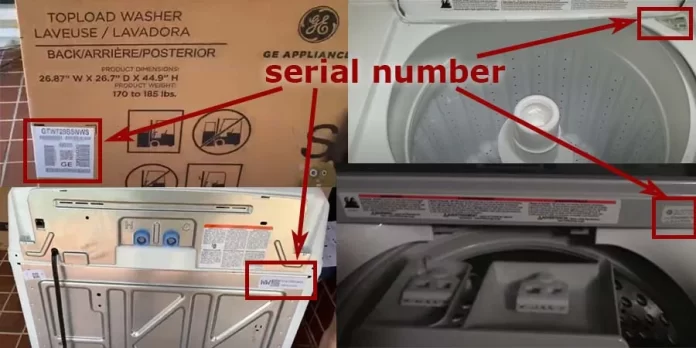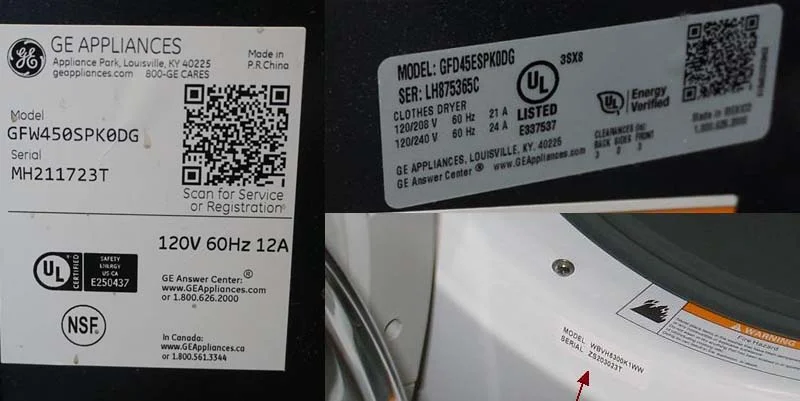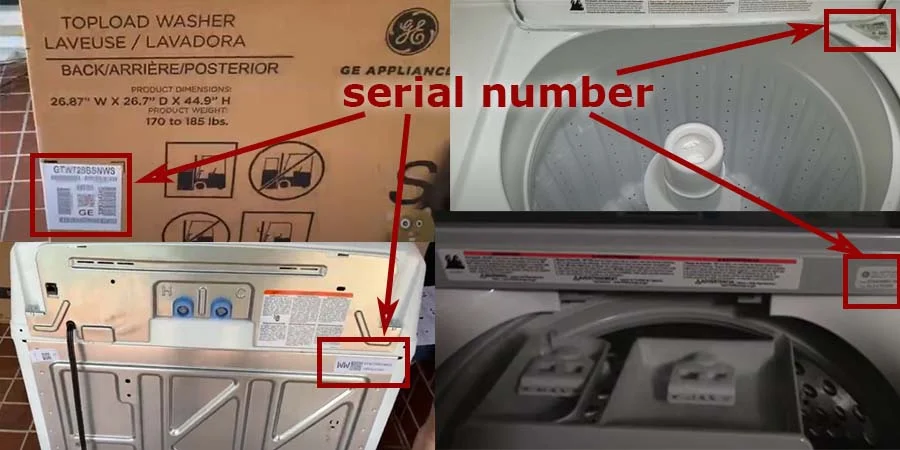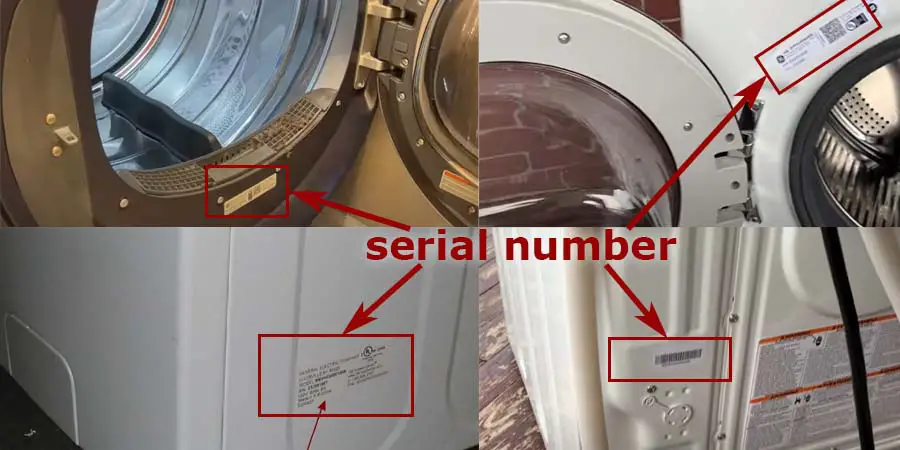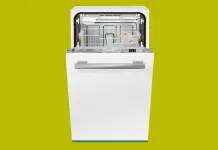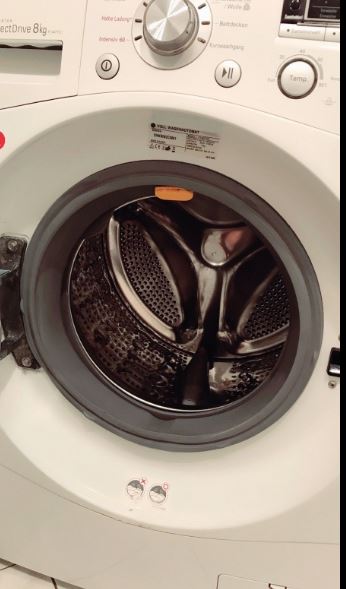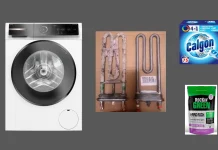General Electric, one of the largest and oldest appliance manufacturers in the U.S., sold its appliance division and plants to China’s Haier in 2016. Historically, GE has not provided the year of manufacture for its appliances like washing machines and refrigerators. However, the assembly date of your GE washing machine can be determined from the serial number, which often appears on a sticker along with other identifying information. In this article, I will explain how to use the serial number to find out the age of your GE washing machine.
The placement and style of the information sticker vary depending on when and where the washing machine was assembled. While the sticker may look different, it will always include essential details about the appliance. Now, let’s dive into where you can locate the serial number on your GE washer or dryer.
Locating the Serial Number on Your GE Washer/Dryer
There are generally at least two places where the serial number can be found on your GE washer or dryer. The first sticker is designed to be easily accessible so consumers can quickly find information about their appliance. The second sticker is a technical one, used during the assembly process and typically includes a barcode for factory tracking. There is also a sticker on the packing box, which can be kept if the box is still available, though it’s typically discarded after purchase.
Finding the Serial Number on GE Top-Loading Washing Machines
For top-loading washing machines, the serial number can usually be found under the top cover near the attachment point. Look for the sticker either in the center or on the side once you lift the lid. Additionally, there is often a second sticker located on the side near the bottom, closer to the front of the washer. In some cases, there may even be a third sticker, although this is not always the case. If you can’t find the sticker inside, it could be located at the back of the machine. Moving the washing machine may be necessary to access this sticker, but be mindful that this may not always be the most convenient option.
Finding the Serial Number on GE Front-Loading Washing Machines
On front-loading washers, the serial number is typically located beneath the loading door. Open the hatch and inspect the washer’s case under the door for the sticker. A second sticker is usually found on the right side wall, closer to the front of the machine. There may be a third sticker located on the back of the washing machine, but this is not guaranteed. If the second sticker is on the side wall, there is likely no sticker on the back, and vice versa.
By locating and interpreting these serial number stickers, you can easily determine the assembly date of your GE washing machine, giving you valuable insight into its age and history.
Understanding the Structure of General Electric Washing Machine Serial Numbers
To register your GE washer on their website, contact a service center, or get support for your appliance, you’ll need to provide the serial number and model number. The serial number not only helps with identification but also gives insight into the manufacturing date of your washing machine. By decoding the serial number, you can easily determine the year and month of production. GE serial numbers are typically simple in structure and usually follow the format: LD640857. Occasionally, the serial number may end with a suffix, such as LD640857 B.
Example of Decoding a GE Washer Serial Number
Let’s break down an example serial number: LD640857 B. This number consists of two parts. The first part represents the manufacturing date, while the second part is the unique serial number, which encodes information about the specific assembly line where the washing machine was built.
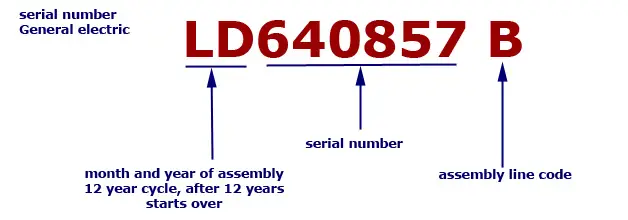
How to Determine the Age of Your GE Washing Machine
To find out the age of your GE washer, you can use the serial number. The first two letters of the serial number indicate the month and year of manufacture. It’s important to note that GE follows a 12-year cycle for serial numbers, meaning the same alphanumeric code may repeat every 12 years. This system allows you to align the production date with the model number to determine the washer’s exact age.
Generally, GE washing machines are produced for about 3 to 5 years before being replaced by newer models. The typical lifespan of a washing machine or refrigerator is 10 to 15 years. After 10 years, production of spare parts for older models may cease, and service centers may no longer offer repairs. Once a washing machine reaches this point, it is considered obsolete, and GE recommends replacing it with a newer model.
By understanding how to read the serial number and recognizing the lifespan of your appliance, you can better assess its age and determine when it may be time to consider a replacement.
GE date codes
| Month/Year | 1977 1989 2001 2013 2025 | 1978 1990 2002 2014 2026 | 1979 1991 2003 2015 2027 | 1980 1992 2004 2016 2028 | 1981 1993 2005 2017 2030 | 1982 1994 2006 2018 2031 | 1983 1995 2007 2018 2032 | 1984 1996 2008 2020 2033 | 1985 1997 2009 2021 2034 | 1986 1998 2010 2022 2035 | 1987 1999 2011 2023 2036 | 1988 2000 2012 2024 2037 | |
| code | A | D | F | G | H | L | M | R | S | T | V | Z | |
| January | A | AA | AD | AF | AG | AH | AL | AM | AR | AS | AT | AV | AZ |
| February | D | DA | DD | DF | DG | DH | DL | DM | DR | DS | DT | DV | DZ |
| March | F | FA | FD | FF | FG | FH | FL | FM | FR | FS | FT | FV | FZ |
| April | G | GA | GD | GF | GG | GH | GL | GM | GR | GS | GT | GV | GZ |
| May | H | HA | HD | HF | HG | HH | HL | HM | HR | HS | HT | HV | HZ |
| June | L | LA | LD | LF | LG | LH | LL | LM | LR | LS | LT | LV | LZ |
| July | M | MA | MD | MF | MG | MH | ML | MM | MR | MS | MT | MV | MZ |
| August | R | RA | RD | RF | RG | RH | RL | RM | RR | RS | RT | RV | RZ |
| September | S | SA | SD | SF | SG | SH | SL | SM | SR | SS | ST | SV | SZ |
| October | T | TA | TD | TF | TG | TH | TL | TM | TR | TS | TT | TV | TZ |
| November | V | VA | VD | VF | VG | VH | VL | VM | VR | VS | VT | VV | VZ |
| December | Z | ZA | ZD | ZF | ZG | ZH | ZV | ZM | ZR | ZS | ZT | ZV | ZZ |
General Electric Home Appliances Production Date Code
General Electric (GE) uses a structured coding system in the serial number of their appliances to indicate the month and year of manufacture. This system allows consumers and service centers to easily determine when a particular appliance was made. Below is an explanation of the month and year codes used by GE, as well as how to decode them from the serial number.
GE Month Code
The first part of GE’s serial number system includes a letter that corresponds to the month of production. The month code is based on a simple alphabetical system where each letter represents a specific month:
| Code | Month |
|---|---|
| A | January |
| D | February |
| F | March |
| G | April |
| H | May |
| L | June |
| M | July |
| R | August |
| S | September |
| T | October |
| V | November |
| Z | December |
For example, if the first letter of your appliance’s serial number is F, this indicates the appliance was manufactured in March.
GE 12-Year Cycling Code
The second part of the serial number contains a letter that corresponds to the year of manufacture. GE follows a 12-year cycle, meaning that the same letter will repeat every 12 years. The year code is based on this cycling system, which associates each letter with a specific year. Here’s the 12-year cycling code:
| Code | Year | Year | Year | Year |
|---|---|---|---|---|
| A | 1977 | 1989 | 2001 | 2013 |
| D | 1978 | 1990 | 2002 | 2014 |
| F | 1979 | 1991 | 2003 | 2015 |
| G | 1980 | 1992 | 2004 | 2016 |
| H | 1981 | 1993 | 2005 | 2017 |
| L | 1982 | 1994 | 2006 | 2018 |
| M | 1983 | 1995 | 2007 | 2019 |
| R | 1984 | 1996 | 2008 | 2020 |
| S | 1985 | 1997 | 2009 | 2021 |
| T | 1986 | 1998 | 2010 | 2022 |
| V | 1987 | 1999 | 2011 | 2023 |
| Z | 1988 | 2000 | 2012 | 2024 |
For example, if the letter in the serial number is G, the production year would be 1980, 1992, 2004, or 2016, depending on the 12-year cycle.
Decoding the Full Serial Number
A typical GE serial number may look like LD640857 B. The first letter, L, corresponds to June, while the second letter, D, corresponds to the year code, which would indicate a year like 1978, 1990, 2002, or 2014, depending on the cycle.
The remaining digits, such as 640857, are the unique serial number used for tracking the appliance, and the letter at the end (e.g., B) represents the assembly line code. This helps identify which assembly line produced the appliance and prevents duplicate serial numbers when multiple lines produce the same model.


